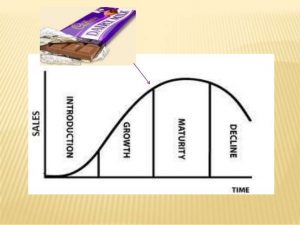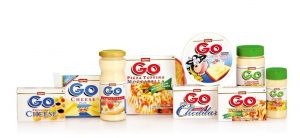We consume many products and services every day of our life; from hiring a cab, consuming groceries, snacks, tea/coffee/cold-drink, and education for kids, flowers, maid/gardener’s service, water, electricity etc, etc. We get used to consuming certain products and services on regular basis, which we don’t like to change.
The picture above of Cadbury Dairy Milk Chocolate shows it in the maturity stage of the product Life cycle. It currently has a market share of 70% in the Indian chocolate market and is way ahead of its competitors. There is a high degree of brand awareness. The color purple and the ‘glass and half full’ logo is amongst the most recognized logos and the association of the two with Cadbury Dairy Milk is synonymous.
I think, it’s a wrong notion that, long-established products eventually don’t get consumed, in fact some century old brands are still in demand because they are handled well throughout their lifecycles and these brands have maintained their consistency. The Product Life Cycle concept was coined by the economist Raymond Vernon in 1966, and it is still a widely used model in economics and marketing. Products enter the market and gradually get withdrawn, according to Vernon, each product has a certain life cycle that begins with its development and ends with its decline. Like human beings, products also go through different stages in their lives. If we look after our health and happiness well, we live longer life, similarly if products are looked after well and given proper treatment, they also last longer in the market.
Product Life Cycle Stages Explained: The product life cycle has four clearly defined stages, each with its own characteristics.
Introduction Stage: In this stage, the product is introduced in the market. This stage of the cycle could be the most expensive. For a company launching a new product, the size of the market, competition from the existing players in the market, engaging marketing channels, everything matters. In this stage three things such as pricing of product, distribution and promotion needs to be tackled effectively. Activities such as marketing research, consumer testing, and promotional activities require huge investment, especially if the product is introduced in a competitive sector. In the early stages of brand launch, people ask ‘what is it’? This question is asked by customers, also by potential investors, partners, and vendors. How effectively this question is answered, dictates whether a brand will grow or not.
Growth Stage: Marketing campaigns during the Introduction stage tend to benefit from all the buzz and hype that surrounds the launch of a new product. But as the product starts getting sold at a good pace, and it starts establishing, a more refined marketing approach is needed in order to make the most of the growth potential of this phase. The growth stage can be seen as when a product’s sales begin to increase rapidly and when the demand is high. The marketer also experiences a noticeable increase in competition as other firms develop similar products to compete for available revenue and market share. The Internet is a current example of a product that can be found in the growth phase of its life cycle. The benefits the Internet has provided have resulted in rapid reception in consumer and business markets.
Maturity stage: During this stage, the product is established and the most important activity of the marketer in this stage is to maintain the market share they have built up. This is probably the most competitive time for most products. And, businesses need to invest wisely in any marketing activity they undertake. The marketer needs to look at strategies such as product modification or improvement to the production process which might give them a competitive advantage. The market maturity stage occurs when the market has become saturated; sales growth rate tends to decrease. Efforts are focused on differentiation of the product. Pricing may be lower because of increased competition. Margins begin to shrink as marginal competitors are forced out of the market. Distribution is maximized and promotions come into play as a way to encourage preference over competing products. Market share becomes the main focus in the maturity stage. If the product maintains profits, regardless of the stage of the lifecycle, it should be said that the product is outstanding.
Decline Stage: Eventually, the market for a product at some point starts weakening, and this is what’s known as the decline stage. The shrinkage could be due to the market saturation, new innovative products introduced in market, or because the consumers are switching to a different type of product. While the decline is a fact and inevitable, it may still be possible for companies to make some profit by switching to less-expensive production methods and discounting prices.
Either at the maturity stage of decline stage a company might look out for strategies such as:
New-packaging: this helps in providing a new image to a product, particularly if the product had a limited target and limited market. Fresh packaging can draw new customers. For example, ‘Go’ dairy product brand came in with its new packaging, it instantly cut the clutter with its bold logotype and image in an otherwise sedate looking category. Interestingly, for its non-traditional dairy products like flavored yogurts and various cheese spreads among others, it went with the name ‘Go’ which is an extension of the mother brand ‘Gowardhan’. The brand design was designed smartly so that the new brand gained from the equity of the umbrella brand but at the same time, it maintained a distinct identity of its own since it very clearly targeted a different consumer set than brand Gowardhan did. New packaging helps the visual effect.
Discounting: Sometimes marketers start designing new pricing strategy which can be a short-term option for a mature product; in some cases, re-pricing the product by discounting can reach out to a target market that has typically seen the product as being just out of reach. The best example can be – hotels offer discounts in the off seasons, in winter we get electric fans, air-conditioners refrigerators at special reduced prices.
Re-Branding: Rebranding is the process of changing the corporate image of a corporate brand/an organization/product/service which many markers have successfully adopted. It is a market strategy of either giving a new name, symbol, change the logo, or change in design for an already-established brand. The idea behind rebranding is to create a different identity for a brand, to make it stand out from clutter, from its competitors. Re-branding a mature product can be a rather extreme approach to extending its life cycle, and it requires to be done proficiently. Re-branding results in changing not only the packaging but also the name and total appearance of the product.
For example, after the exposure of 2009 deception, Satyam Computer Service was pushed to the brink of liquidation. The company was sold to Tech Mahindra. The whole process was stringently followed by the Government authorities and Tech Mahindra named the new corporation as ‘Mahindra Satyam’ in the year 2013, by merging with Satyam Computer Services, which is among the topnotch IT service providers.
Expanding in new markets: In some cases, a product life cycle can only little far in one place. Expanding the product in new markets in abroad to reach out to a completely untapped market can extend the product life cycle on a different level. However, expanding in abroad can be costly, because the product has to be introduced completely in a new market, but if the move is effective the company can bring in profits that give the product new life.
The Biggest Marketing Challenge: The biggest challenge, rather the main challenge for all marketers is creating differentiation among the targeted markets. The answer to the question ‘what is the product’ must clearly differentiate a brand from competitors’ offerings. Each marketer must answer this question by adding relevance and consistency. At all stages of the life of the product, if the brand isn’t differentiated in an attractive way, it loses its market share and visibility. At times in the introduction stage itself, a product can be defunct.















































